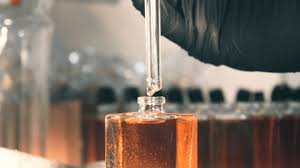In recent years, there has been increasing concern about the role that household products may play in impacting human health, specifically in relation to hormone disruption and early puberty. A study published in the journal Nature Communications has added to this conversation by suggesting a potential link between certain chemicals found in everyday products and the onset of early puberty in girls.
The study, conducted by researchers at the University of California, Berkeley, focused on a class of chemicals known as phthalates. Phthalates are commonly used in a variety of household products, including plastics, fragrances, and personal care items. They are known to have endocrine-disrupting properties, meaning they can interfere with the body’s hormonal systems.
The researchers analyzed data from a long-term study called the Center for the Health Assessment of Mothers and Children of Salinas (CHAMACOS), which followed a cohort of pregnant women and their children in California. They found that girls who were exposed to higher levels of certain phthalates in the womb were more likely to experience early puberty.
Early puberty, also known as precocious puberty, is defined as the onset of puberty before the age of 8 in girls and before the age of 9 in boys. It can have significant implications for both physical and mental health, as well as social and emotional well-being.
While the study does not prove a direct cause-and-effect relationship between phthalate exposure and early puberty, it does raise important questions about the potential impact of these chemicals on human development. The findings add to a growing body of research linking environmental exposures to hormone disruption and altered reproductive health.
So, what can individuals do to reduce their exposure to phthalates and other potentially harmful chemicals in household products? Here are a few tips:
1. Read labels: Look for products that are labeled as “phthalate-free” or “fragrance-free.” Avoid products that list phthalates among the ingredients.
2. Choose natural alternatives: Opt for natural, organic, and eco-friendly products whenever possible. These products are less likely to contain synthetic chemicals.
3. Use glass or stainless steel containers: When storing food or beverages, avoid plastic containers that may contain phthalates. Instead, use glass or stainless steel containers.
4. Ventilate your home: Proper ventilation can help reduce indoor air pollution from household products. Open windows, use exhaust fans, and consider investing in an air purifier.
5. Stay informed: Stay up to date on the latest research and recommendations regarding household products and their potential health effects. Knowledge is power when it comes to protecting yourself and your family.
In conclusion, while more research is needed to fully understand the link between household products and early puberty, the study published in Nature Communications provides valuable insights into the potential impact of chemical exposures on human development. By taking proactive steps to reduce exposure to harmful chemicals, individuals can help protect their health and well-being.

